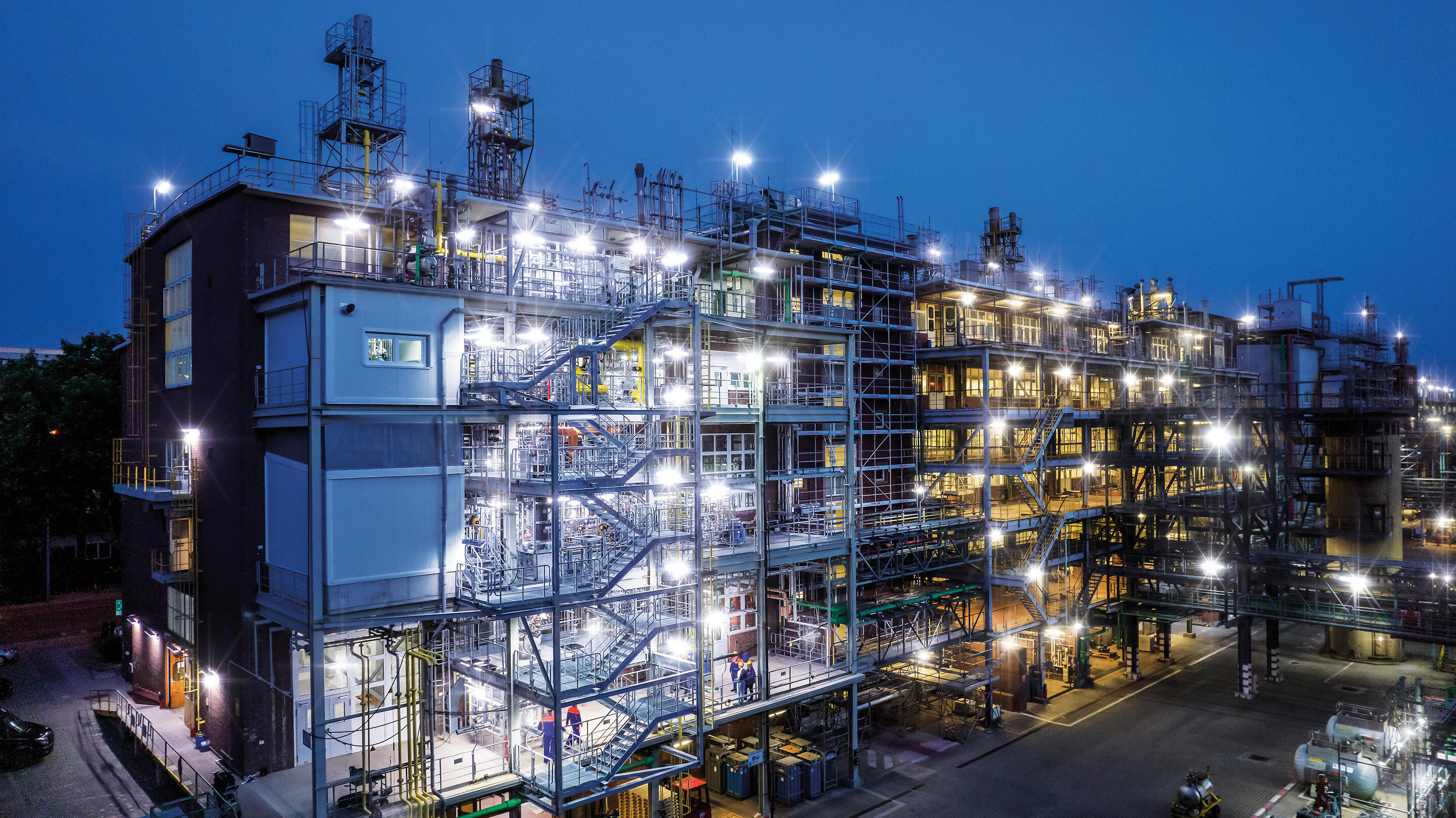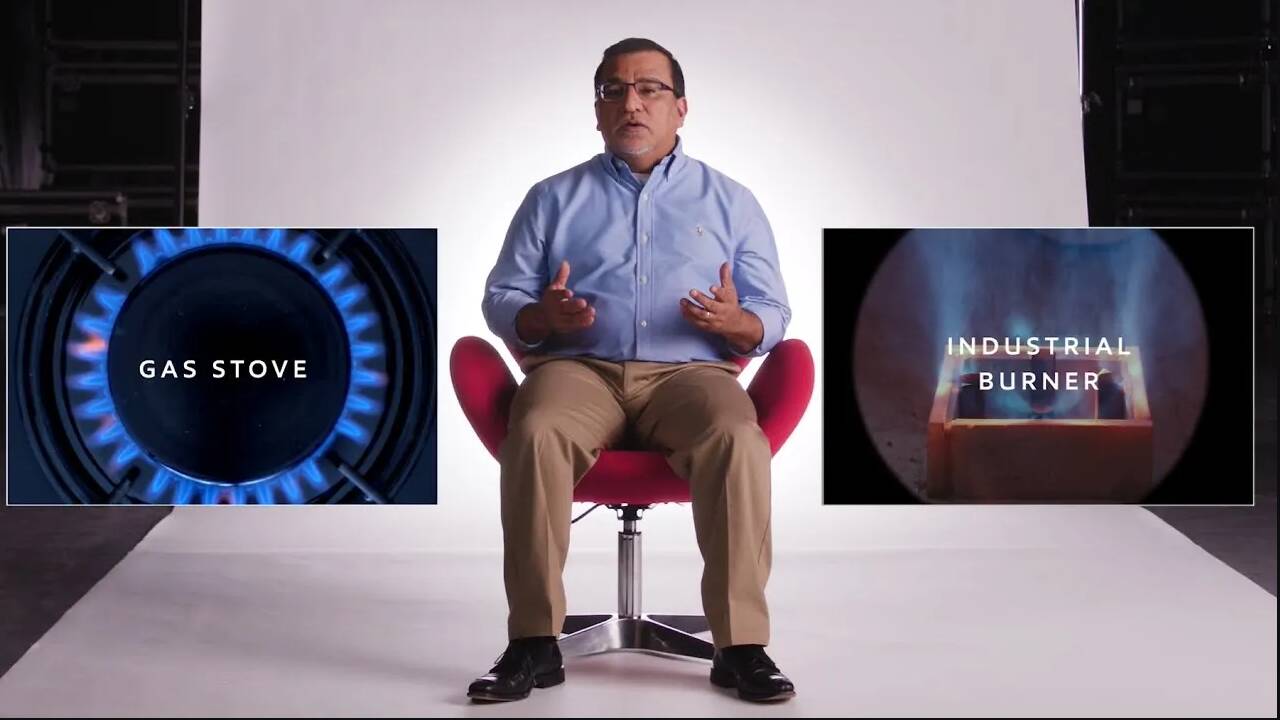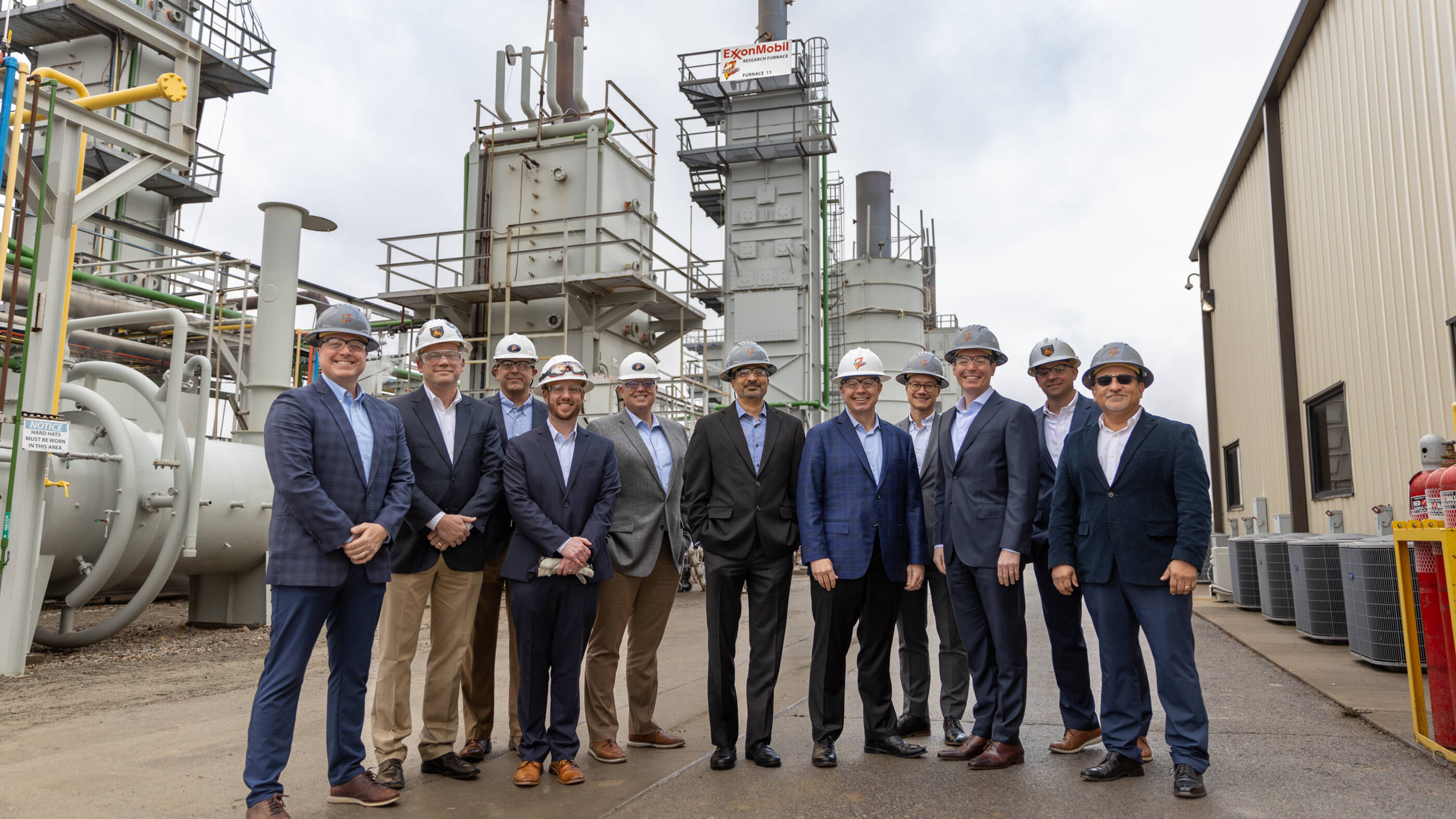4 min read
• July 15, 2024A call to action on U.S. hydrogen
- New report details benefits of low-carbon hydrogen, urges U.S. policy action.
- Report produced by diverse group that included industry, academia, NGOs.
- Our own Mike Kerby was a lead author.
4 min read
• July 15, 2024Navigate to:

The National Petroleum Council (NPC) recently published a landmark report on low-carbon hydrogen that’s more than 1,200 pages long.
But Mike Kerby can sum it up in just 12 words: “Hydrogen could have a mighty impact on emissions, with the right support.”
Mike should know: He was one of the report’s lead authors.
A chemist by training with more than 30 years’ experience, Mike's currently senior advisor in our Corporate Strategic Planning group (the team of experts who assess trends in global energy markets to help guide our investments).
For the past two years, he also was part of the NPC committee studying the potential for expanding the nascent U.S. market for low-carbon hydrogen. (That’s a term for hydrogen produced in ways that emit fewer greenhouse gases than current methods, such as our planned project in Baytown, Texas, which would make hydrogen from natural gas, with the associated CO2 emissions captured and stored).
The committee’s findings show just how “mighty” hydrogen could be:
- Low-carbon hydrogen can be a key solution for “hard to abate” applications in heavy industry, commercial transportation and power generation.
- In fact, in a hypothetical scenario in which the U.S. reaches its stated goal of net-zero emissions by 2050, the report’s models estimated that by 2050 hydrogen could remove 8% of total U.S. emissions – a significant contribution.1
- Low-carbon hydrogen could reduce emissions at a lower cost to society than other options, while also supporting U.S. economic growth and jobs and strengthening energy security.
So why did Energy Secretary Jennifer Granholm – at whose request the report was prepared – call its findings “sobering”?
Because it described how much more work would be needed to grow the U.S. hydrogen market from where it is today (11 million metric tons a year) to the level envisioned by the report’s U.S.-net-zero-by-2050 scenario (about seven times higher).
“We’re talking nearly $2 trillion in capital investment for hydrogen production, the build-out of an interstate hydrogen pipeline network and other major new infrastructure, plus the cooperation of multiple industries, government institutions and academia,” Mike said.
“It’s a big challenge.”
Key recommendations for low-carbon hydrogen
Fortunately, the NPC report provided a road map, listing 23 recommendations for U.S. government and industry. For Mike, the top two are:
- Policies that incentivize demand. While the Inflation Reduction Act (IRA) provided incentives for hydrogen production, it didn’t address demand. “The IRA is a great start, but it needs to be paired with market-driven incentives on the demand side,” Mike said.
- The expansion of existing policy incentives for hydrogen production. This includes the extension of the IRA’s 45V tax credit from 10 to 20 years, and expansion of 45V language to incentivize the use of low-carbon-intensity natural gas as a hydrogen feedstock.
“Low-carbon hydrogen is more expensive than today’s fuels,” Mike said. “That cost gap will likely decrease as technologies improve. But in the meantime, in order to support sustained demand, we recommended well-designed, market-driven, technology-neutral policies.”
Also important, the report said, is the need to engage with communities who could be impacted by growth in hydrogen and related infrastructure. Mike noted this was the first time an NPC report has addressed socioeconomic considerations at a community level, including issues related to environmental justice.
For more details on the committee's recommendations, see the blue boxes below or check out the report's executive summary.
The National Petroleum Council is an advisory group to the U.S. Secretary of Energy on energy-related matters. Its hydrogen report reflects input from more than 100 groups – not just energy and other industrial companies, but also academia and environmental NGOs.
Mike said he’s already seeing signs the report’s recommendations are gaining traction – which is good because he thinks there’s little time to waste if the U.S. wants to fully harness hydrogen’s potential to reduce emissions, particularly in the hard-to-decarbonize sectors, by 2050.
“Twenty-five years might seem like a long time, but in terms of building a new hydrogen industry, it’s right around the corner,” he said.
NPC hydrogen report: 3 key recommendations:
-
Policies to incentivize demand
- An economy-wide price on carbon (aka “carbon tax”) was seen as the most effective and efficient option for incentivizing demand, but the committee recognized the U.S. “may not be ready to activate this lever.”
- So it also recommended sector-based alternatives: a national low-carbon intensity standard for transportation, and another for industry. These technology-neutral policies could be funded through carbon credit markets without burdening taxpayers, the report said.
-
Expanded hydrogen production incentives
- The extension of the IRA’s 45V tax credit from 10 to 20 years (to better match the life cycle of production facilities), and
- The need for final 45V language that incentivizes the use of low-carbon-intensity natural gas to produce hydrogen.
-
Not just policies, people
- Government and industry must equitably address societal, environmental and public health impacts related to the growth of low-carbon hydrogen supply, demand and infrastructure, the report said.
- It recommended “transformative community engagement” – such as expanded literacy and listening sessions, and requiring energy developers to submit community benefits plans in any applications for federal funds – to achieve net positive outcomes for society.
Newsroom
Stay up to date with the latest news and information
Explore more

ExxonMobil and BASF join forces to advance low-emission hydrogen through methane pyrolysis technology
5 min read
• Nov. 17, 2025
Baytown breakthrough: Our next-generation hydrogen burner can help decarbonize a key industry
3 min read
• Jan. 23, 2025
Got 2 minutes? Learn why a new hydrogen burner could be a game-changer for industry
2 min read
• Nov. 13, 2024
The heat is on: Getting industry hydrogen-ready

Expert Spotlight: Bryan Chapman

